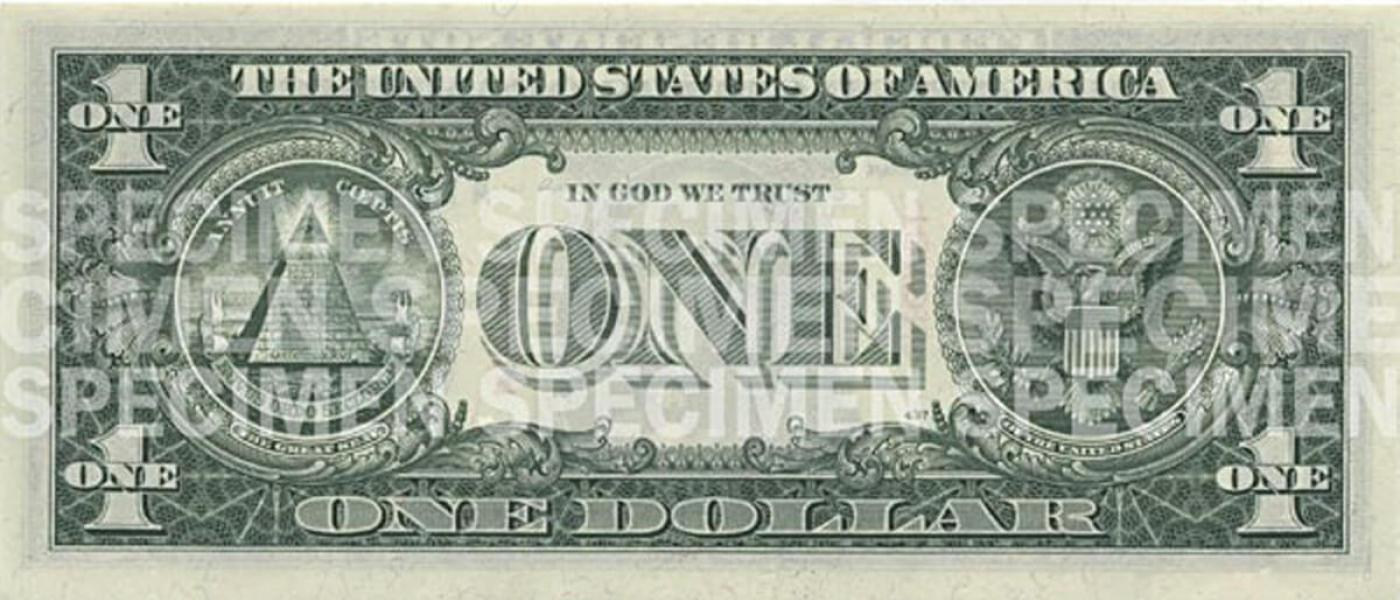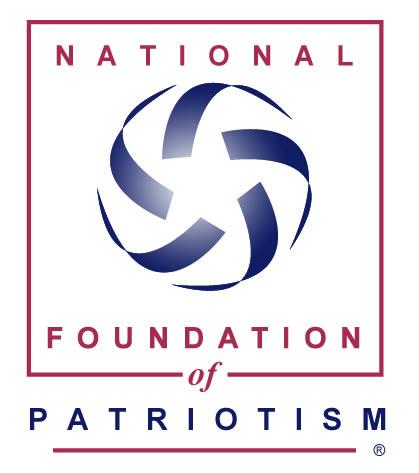The Dollar Bill
"Blessed is the Nation whose God is the Lord" - Psalm 33:12
There is no possible doubt that America was founded on and continues to embrace our Judeo-Christian values.
Even on our currency, we honor God! 'Annuit Coeptis' means, “God has favored our undertaking" and
'E Pluribus Unum' means “Out of many, one”.
In God We Trust has been our national motto since the 1864. Minted on our coins and later, much later, 1956 printed on our "paper" money.
ABOUT THE DOLLAR BILL


The First Continental Congress requested that Benjamin Franklin and a group of men (including Thomas Jefferson and John Adams) design a Seal. It took four years and two more committees to accomplish this task and yet another two years to get it approved. It wasn’t until June 13, 1782 that Charles Thompson, Secretary of Congress, made the final submission. He incorporated elements from all three committees.
The Pyramid is the uncapped, again signifying that we were not even close to being finished. Inside the capstone you have the all-seeing eye, said to be ancient symbol for divinity. It was Franklin’s belief that one man couldn’t do it alone, but a group of men, with the help of God, could do anything. His committee wanted the seal to include some symbol of divine providence and discussed a variety of themes – including the children of Israel in the Wilderness.
The Latin above the pyramid, ANNUIT COEPTIS, means, “God has favored our undertaking.” The Latin below the pyramid, NOVUS ORDO SECLORIUM, means, “A New Order for the Ages.” At the base of the pyramid is the Roman Numerals symbol for 1776.
A Revolutionary American creation, the Great Seal is a unique combination of natural elements (eagle, olive branch, stars, cloud, light rays, eye) and universal symbols (pyramid, arrows, shield).
If you look at the left-and circle of the Great Seal, you will see a pyramid. This pyramid was not a part of the proposals for the Great Seal until the third committee, and it was NOT suggested by Jefferson, Franklin, or Adams. Charles Thompson said the pyramid represented “Strength and Duration.” Furthermore, Francis Hopkinson, a literary man of letter, is credited with being the first to use the pyramid on the American money.
On the back of the one dollar bill, you will notice two large circle, one on each side with the word ONE in the center. Together, both circles comprise an image of both halves of the Great Seal of the United States.
If you look at the right-hand circle, and check it carefully, you will notice that, only slightly modified, it is recognizable as the seal of the President of the United States, and it is always visible whenever he speaks. Also, notice the shield is unsupported. This country can now stand on its own. At the top of that shield you have a while bar signifying Congress, a unifying factor. We were coming together as one nation.
Notice what the Eagle holds in his talons. He holds an olive branch an arrows. This country wants peace, but we will never be afraid to fight to preserve peace. The Eagle always wants to face the olive branch.
In the Eagle’s beak is a ribbon on which you will read the words: “E PLURIBUS UNUM”, meaning, “Out of many, one”. Above the Eagle, you have thirteen stars, representing the thirteen original colonies, and any clouds of misunderstanding tolling away.
In its present design the one dollar bill came off the presses for the first time in 1957. American one dollar bills have been known as PAPER MONEY for many years. Have you ever laundered your money on an accident and notice it did not come to pieces like paper would? That’s because dollar bills are a cotton and linen blend, with minute silk fibers of red, white and blue weaved through it.
George Washington, Father of His country, who was our First President of our present Government, has his picture in the center of the one dollar bill. As President Washington was first in war, and first in peace isn’t it only fitting that he should have his picture decorating the One Dollar Bill?
Directly beneath the seal is the signature of the Secretary of the United States Treasury, who oversees the U.S. Mint and Bureau of Engraving and Printing. Just to the left of his (or her) signature is the series year – 2014, 1957, etc.
Thirty-two one dollar bills are printed each time the printing plate comes down. Directly below the bid number 1 on the upper top of the one dollar bill is a large letter, and a small number. The letter indicates which row the bill was taken from. The number beside the letter indicates the position of the bill on that row. Just above the small one on the right hand side of the one dollar bill is a very small number and letter combination which tells exactly which specific plate was used to print this particular bill.
SYMBOLS ON THE ONE DOLLAR BILL
Now we reintroduce the Seal so that you can go directly across George’s picture to the Bank seal on the left hand side in the same position. You will notice it has a LARGE letter in the center of the seal. These letters identify the bank that issued the bill. For example, the letter K, indicates that the Federal Reserve Ban in Dallas, Texas and the letter H represents St. Louis, Missouri.
The letter which trails after the numerals in serial number reveals how many times the exact same serial number has run. The letter A identifies it as the first run, and the letter Z identifies it as the 26h run with 32 bills printed on each run. Consequently, there are only be 832 bills printed with the same numbers.
There is a serial number in the lower left hand portion of the one dollar bill, and a matching number in the upper right hand portion. The letter which precedes the numbers must be the same number identifying the Federal Reserve Bank.
Interestingly enough, if you read off the serial number and give a DIFFERENT first than the one actually on the bill, the Treasury Department can tell instantly that you have made a mistake, or that you have a counterfeit bill in your hands. In the upper left hand corner—beside the ROW identifier mentioned previously, you will find a NUMBER. It is rather inconspicuous unless you are looking for it. This number is yet another identifier of the issuing bank. The number “2” (for example) must match the letter B in the issuing bank seal. The same number will be found similarity in close proximity to each of the number 1s in each of the four corners of the one dollar bill.
For more information about the history of "In God We Trust" on our currency, click here. (links to an article from Treasury.gov)


